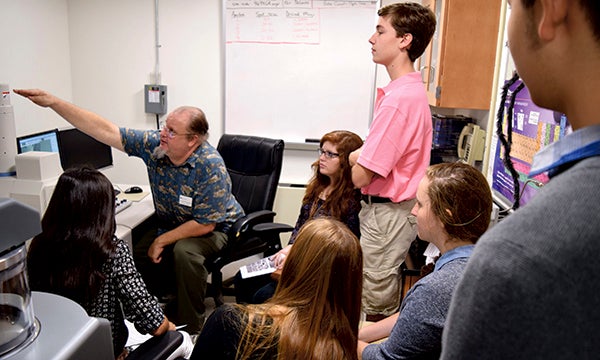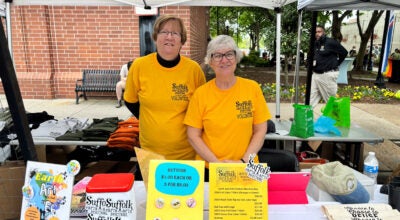Wesleyan hosts NSA students
Published 12:01 am Saturday, October 31, 2015

Virginia Wesleyan College Professor of Biology Victor Townsend and honors biology students from Nansemond-Suffolk Academy examine a fruit fly with the college’s variable-pressure scanning electron microscope on Thursday. The students are, from left, Maddie Dumaran, Chaya Woods, Davis Lydon, Kate Dewing, Shawn Xi and Alex Bivins.
Virginia Wesleyan College hosted 28 high school students from Nansemond-Suffolk Academy on Thursday. The honors biology students visited the college with NSA teacher Laura George, who participated in the NABT/BSCS Biology Teacher Academy held at VWC in July.
During their visit, the students participated in lab activities, working closely with VWC Professor of Biology Victor Townsend, Batten Professor of Biology Phil Rock, and VWC Assistant Professor of Biology Eric Johnson.
They compared three types of microscopy, studying fruit flies through the lenses of the college’s variable-pressure scanning electron microscope, a stereo microscope, and a compound microscope. The students also heard research presentations by Virginia Wesleyan biology students Ashley Byers, Emily Brooks and Tatyana Zvonareva.
This is the second in a series of visits from area high school students. In September, the college welcomed biology students from King’s Fork High School, and next week it will host a group from Green Run High School in Virginia Beach. Plans are in motion for additional visits this spring.
Since 2010, Virginia Wesleyan’s natural sciences building, Blocker Hall, has received close to $4 million in renovations, including the creation of several research labs; updates to Blocker Auditorium; and the addition of a scanning electron microscope—the result of a $242,502 grant from the National Science Foundation.
The college also touted its NSF-funded STEM Scholars Program to the visiting students, along with the college’s proximity to the Chesapeake Bay and Atlantic Ocean, which offer opportunities for undergraduate research.






